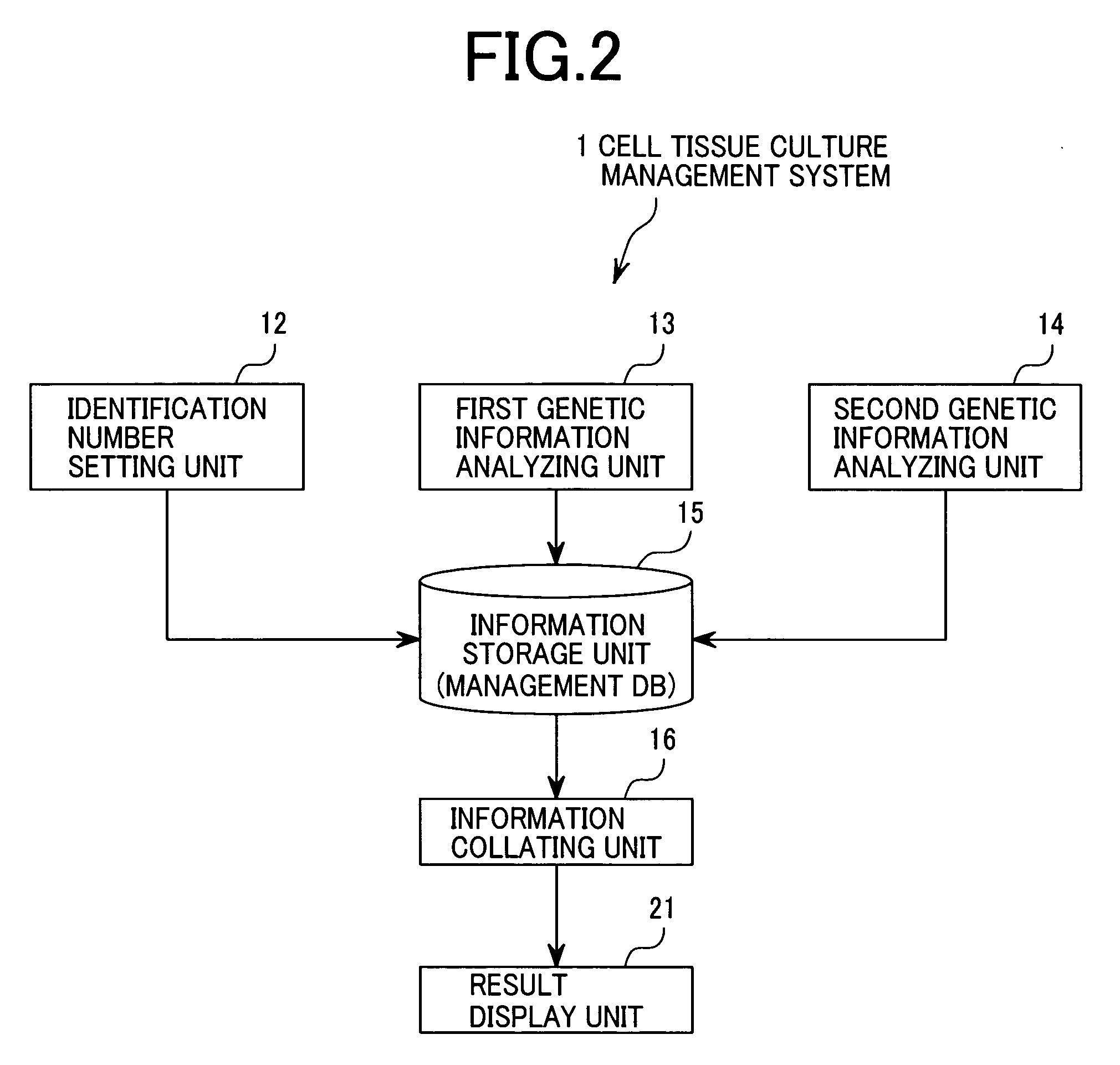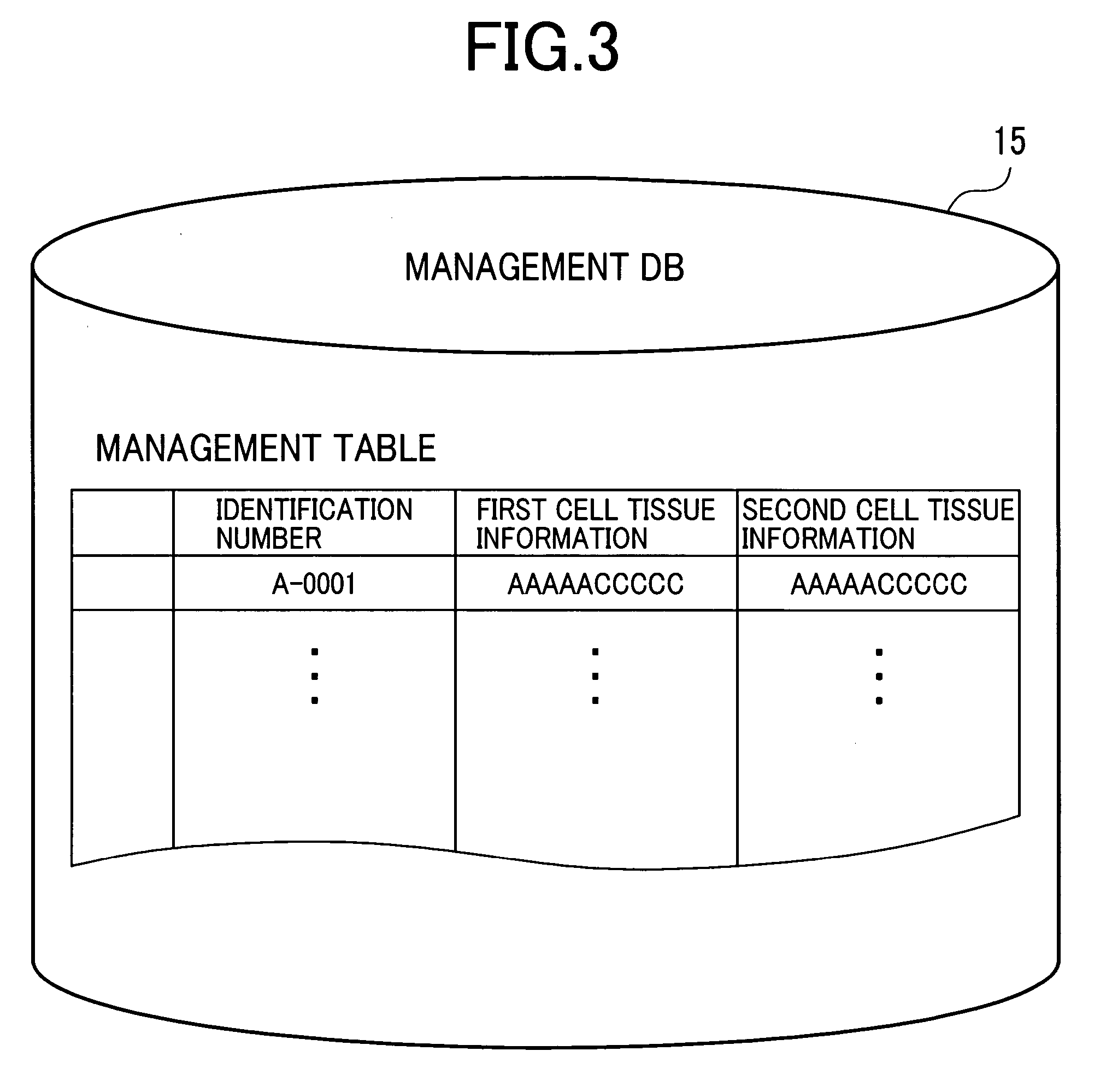Cell tissue culture management method and system
- Summary
- Abstract
- Description
- Claims
- Application Information
AI Technical Summary
Benefits of technology
Problems solved by technology
Method used
Image
Examples
first embodiment
[0025] First Embodiment
[0026] A first embodiment of a best mode for carrying out this invention's cell tissue culture management method and system will now be described in detail with reference to the drawings.
[Process Sequence of a Cell Tissue Culture Management Method]
[0027]FIG. 1 is a process sequence diagram of the first embodiment's cell tissue culture management method. This process sequence will now be described with reference to FIG. 1.
[0028] As shown in FIG. 1, the process sequence comprises: a first sampling step S2 of sampling a sample (first cell tissue) for genetic information analysis of a cell or tissue (referred to hereinafter as “cell tissue”), which has been received and is to be subject to a culture process, from the cell tissue; a cell processing step S3 of subjecting the remaining cell tissue, among the cell tissue from which the sample for genetic information analysis has been sampled in first sampling step S2, to the culture process; and a second sampling s...
second embodiment
[0054] Second Embodiment
[0055] A second embodiment of the best mode for carrying out this invention's cell tissue culture management method and system will now be described in detail with reference to FIG. 7 (and with reference to FIG. 1 where suitable). FIG. 7 is a block diagram illustrating, in regard to the second embodiment, the overall flow of information and objects that includes a hospital, the arrangement of a cell processing facility that executes the cell processing step, and the composition of the cell tissue culture management system. Blocks provided with the same numbers as the blocks in FIG. 5 are the same as those shown in FIG. 5 and description thereof will be omitted.
[0056] This second embodiment differs from the first embodiment in that the setting of identification number J3 is carried out in the hospital or other medical agency 30 in which the cell tissue is sampled from the cell donor (and thus identification number setting unit 12 is unnecessary), the analysis...
PUM
| Property | Measurement | Unit |
|---|---|---|
| Time | aaaaa | aaaaa |
Abstract
Description
Claims
Application Information
 Login to View More
Login to View More - R&D
- Intellectual Property
- Life Sciences
- Materials
- Tech Scout
- Unparalleled Data Quality
- Higher Quality Content
- 60% Fewer Hallucinations
Browse by: Latest US Patents, China's latest patents, Technical Efficacy Thesaurus, Application Domain, Technology Topic, Popular Technical Reports.
© 2025 PatSnap. All rights reserved.Legal|Privacy policy|Modern Slavery Act Transparency Statement|Sitemap|About US| Contact US: help@patsnap.com



